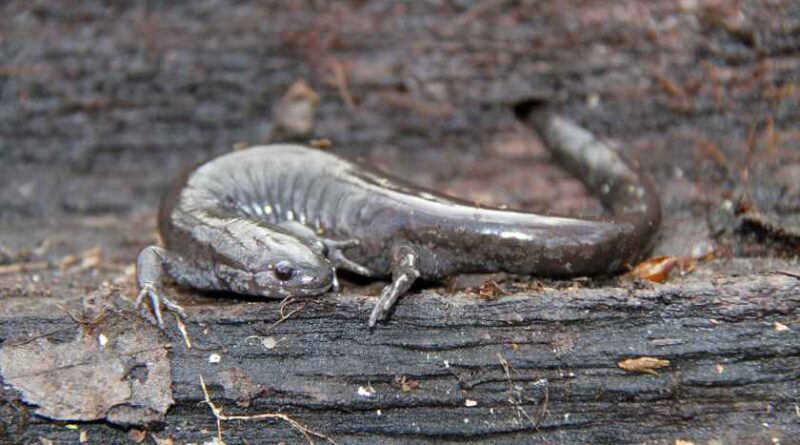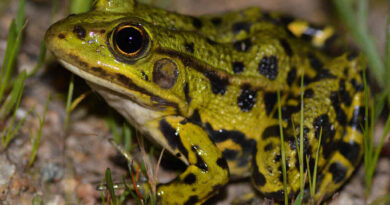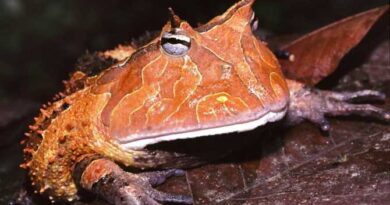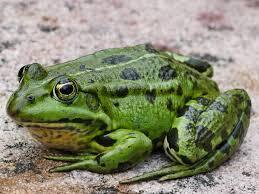AMBYSTOMATIDS
AMBYSTOMATIDS – salamanders, also known as North American Mole salamanders, are medium-sized salamanders with a strong build and large heads. The Marbled salamander, Ambystoma opacum, is a terrestrial salamander that can grow to be 5 in (12:5 cm) long. From New England to Northern Florida, and westward to Texas, it can be found on hilltops along streams. The eggs are laid in shallow depressions on land, usually guarded by the female until the next heavy rain, when they hatch. Breeding occurs in the autumn, fertilisation is internal, and the eggs are laid in shallow depressions on land, usually guarded by the female until the next heavy rain, when they hatch. They may not hatch until the next spring if the weather is extremely dry. Courtship takes place in water with a complicated ritual in most other ambystoma- tids, including as the Spotted salamander Ambystoma maculatum, which has the same range as the Marbled salamander. The sperm are released in a packet called a spermatophore, which is picked up by the female’s cloaca. The Spotted salamander breeds in the early spring, when it can be seen migrating to the breeding ponds in great numbers. They go into ‘hiding’ after breeding until the next spring, and they are secretive and rarely seen for the remainder of the year. The eggs hatch in 30-54 days, resulting in about (1.25 cm) length larvae. External gills are resorbed after 60-110 days, metamorphosis is complete, and the animal becomes terrestrial at a length of 2-3 in (5-7:5 cm). Adults reach a length of 9 inches (22:5 cm).
The Tiger salamander, A. 1igrinum, can reach a length of 13 in (32:5 cm), making it one of the largest terrestrial salamanders. Its name comes from the yellow or light olive bands that run across its upper surface. Its distribution is similar to that of Marbled and Spotted salamanders, with the exception that it is a low-land variety. It lays its eggs in deep-water ponds and undergoes rapid metamorphosis.
Frosted flatwood salamander A. cingulatum, a 4 in (11-25 cm) long Mole salamander, is named for its greyish dorsal patterns on a black background, which resemble frost on leaves. The species’ distribution in the wire-grass flatwoods between North Carolina and northeast Florida is referenced in the second part of the name. The Ringed salamander A. annulatum can be found in shallow pools from Central Missouri to West Arkansas and Eastern Oklahoma during the mating season following heavy rain. Despite its unusually huge size of 8 in, it is difficult to find throughout the remainder of the year (20 cm).
The vast majority of salamanders, including the ambystomatids, are deafeningly silent. The Pacific giant salamander Dicamptodon ensatus, which lives in damp coastal forests from British Columbia to Northern California and can grow to be 12 inches long, is an exception (30 cm). When it is agitated, it emits a low-pitched bark or scream. This is a big species, as its name implies. This ambystomatid has a clunky build in comparison to the other ambystomatids, yet it can reportedly climb well and has been found several feet above the ground in small shrubs or on slanting tree trunks. The Olympic salamander Rhyacotriton olympicus, which is 4 in (10 cm) long, has exceptionally small lungs. It lives in mountain streams in Oregon and Washington’s coastal forests.
Rlhyacosiredon is a genus of four species found on the southern margin of the Mexican plateau. In the Ambystomatidac, neoteny (breeding in the larval stage) is prevalent. The axolotl, a permanent larva of Ambystoma m1exicanu771, is the most well-known example. It can be found in the vicinity of Mexico City and does well in captivity. Some salamander species are neotenous in one part of their distribution but not in the other. For example, metamorphosis occurs within a few months in the eastern subspecies of the Tiger salamander, but transformation commonly fails in the western subspecies, resulting in the animals breeding as larvae. The lack of iodine in the water is the most important factor contributing to neoteny. Ambystomatidae, Ambystomatidae, Ambystomatidae, Ambystomatid
CLASS: Amphbia, ORDER: Caudata.



